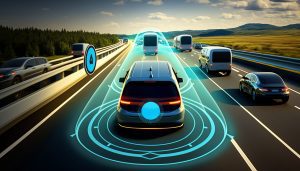Waymo, the Alphabet subsidiary and pioneer in autonomous driving technology, announced that it plans to double the service area of its robotaxis in Phoenix, Arizona, in an effort to increase the number of driverless trips tenfold. This bold move marks a significant step toward expanding autonomous mobility and offers insight into the future of transportation in urban areas.
Doubling the service area
Waymo’s plan is to extend the service area of its robotaxis beyond the current boundaries of Phoenix, covering an area of about 50 square miles. The goal is to make robotaxi service accessible to more residents and visitors, increasing demand and promoting the adoption of autonomous vehicles as an alternative means of transportation.

Tenfold increase in driverless travel
Waymo is determined to increase tenfold the number of driverless trips offered through its robotaxi platform. This ambitious goal reflects confidence in autonomous driving technology and a willingness to expand the service on a large scale. By increasing the number of driverless trips, Waymo hopes to demonstrate the safety, efficiency and reliability of its autonomous vehicles.
Impact on urban mobility and the environment
The expansion of Waymo’s robotaxi service area in Phoenix could have a significant impact on urban mobility and the environment. Autonomous vehicles can provide a safer transportation service by reducing the risk of traffic accidents caused by human error. In addition, the adoption of autonomous electric vehicles can help reduce greenhouse gas emissions and air pollution in cities.
In addition to these benefits, robotaxis can also help reduce traffic in urban areas, as autonomous vehicles can be shared among multiple users and optimize routes to reduce travel time.

Challenges and future prospects
Despite Waymo’s enthusiasm and ambitions, there are still several challenges ahead to ensure the successful expansion of robotaxis in Phoenix and other cities. Concerns about safety, regulation, and EV charging infrastructure must be addressed to ensure widespread adoption of autonomous driving technology.
However, the expansion of Waymo’s robotaxi service area in Phoenix represents an important step toward a future in which autonomous mobility becomes an integral part of our transportation system. If Waymo succeeds in increasing the number of driverless trips tenfold and expanding the service effectively, it could mark the beginning of a revolution in the transportation industry. This change would have the potential to improve road safety, reduce environmental impact, and increase transportation efficiency in urban areas.
In conclusion, Waymo’s announcement to double the robotaxi service area in Phoenix and aim to increase the number of driverless trips tenfold is a positive sign for the future of autonomous mobility. While challenges remain, Waymo’s determination to expand service and promote the adoption of autonomous vehicles could have a lasting impact on the way we get around cities and help shape the future of urban transportation.








